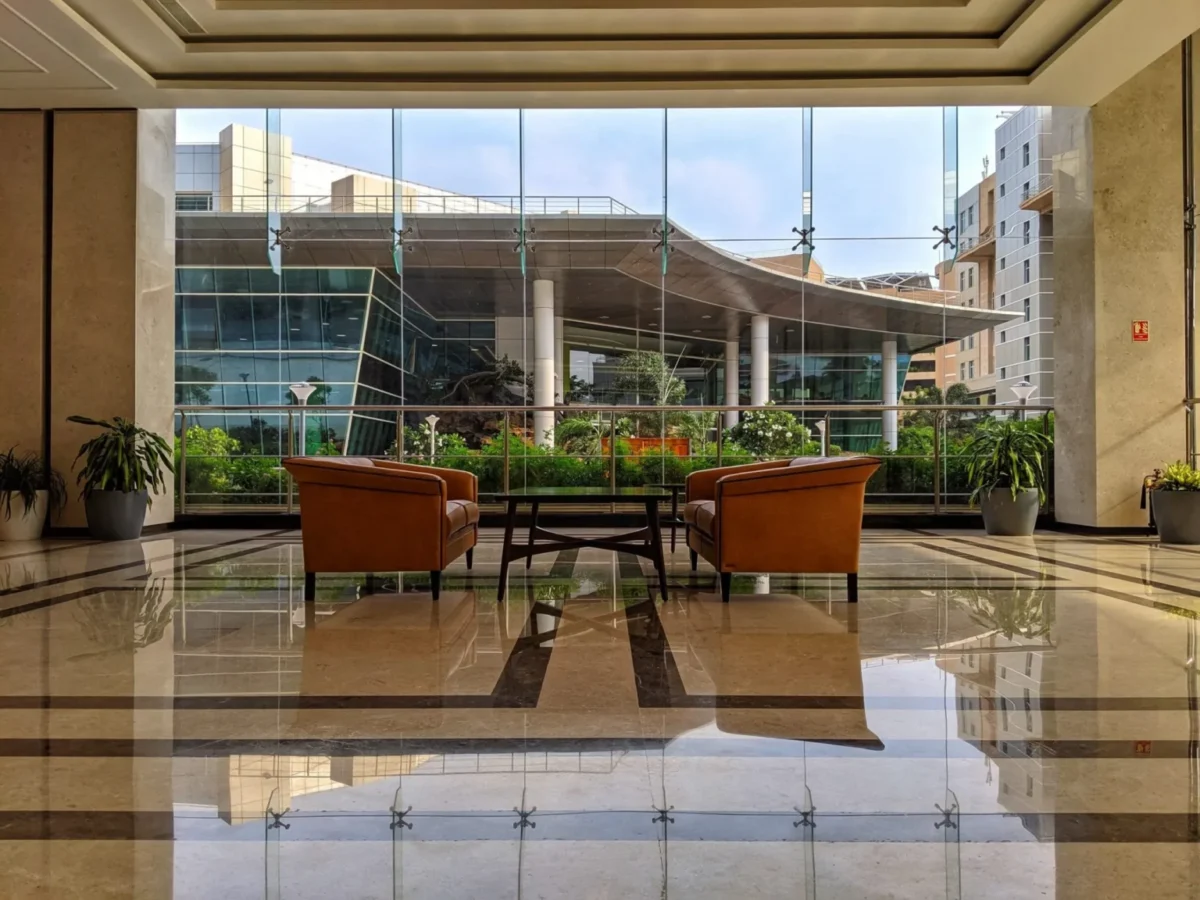
Most facility managers are familiar with hard services — the fixed parts of a facility’s operation you can’t change. But just as important are the soft services, the ones you can use. When done correctly, soft services are an effective tool for improving the workplace in ways that support employees and the work they’re doing. They might seem like perks to some, but in the end, they help you elevate a facility for work into a thriving office space.
Soft vs. hard services in facility management
To understand the unique role of soft services, we need to first look at hard services in facility management. From there, we can develop a strong working definition of soft services.
Examples of hard services in facility management
Hard services are technical and physical services that involve the maintenance, repair, and management of the building’s infrastructure, systems, and equipment. These services often require specialized technical knowledge and expertise.
Broad examples include:
- Heating
- Lighting/electrical
- Plumbing
- Air conditioning
- Mechanical
More specific examples of hard services include:
- Mechanical and electrical maintenance: maintenance, repair, and management of heating, ventilation, and air conditioning (HVAC) systems, electrical systems, plumbing systems, and other mechanical systems
- Building fabric maintenance: maintenance and repair of the building’s structural elements, such as walls, floors, roofs, windows, and doors
- Fire safety systems: installation, maintenance, and testing of fire alarm systems, fire extinguishers, emergency lighting, and other fire safety equipment
- Lifts and elevators: maintenance and repair of lifts and elevators to guarantee their safe and efficient operation
- Energy management: monitoring and optimization of energy usage, implementing energy-efficient measures, and managing utility services
- Building security systems: installation, maintenance, and monitoring of access control systems, CCTV cameras, burglar alarms, and other security systems
- Building automation systems: management and maintenance of building automation systems, such as building management systems (BMS), to control and monitor various building functions.
Hard services are critical for the proper functioning and maintenance of the facility’s infrastructure and systems. They’re physically integrated into the building. You can’t remove them. And you wouldn’t want to remove them anyway. They’re vital to the workplace environment because they directly or indirectly impact every person in the building on some level.
Examples of soft services in facility management
Soft services in facility management are the non-technical and non-physical tasks focused on creating a safe, clean, and comfortable environment for occupants. These services generally involve human interaction and are often outsourced to specialized service providers.
Broad examples include:
- Building security
- Cleaning
- Landscaping
- Office decorating
- Catering
- Office moves
More specific examples of soft services include:
- Cleaning and janitorial services: regular cleaning, waste management, restroom maintenance, and general housekeeping tasks
- Security services: access control, CCTV monitoring, security personnel, and emergency response to ensure the safety and protection of the facility and its occupants
- Reception and concierge services: front desk management, visitor management, mail handling, and other administrative support services
- Pest control: measures to prevent and control pests, such as insects, rodents, and other unwanted animals, to maintain a hygienic environment
- Landscaping and grounds maintenance: maintenance of outdoor spaces, including gardening, lawn care, landscaping, and upkeep of green areas
- Catering and food services: provision of food and beverages for cafeterias, canteens, or special events within the facility
- Waste management: collection, segregation, and disposal of waste in an environmentally responsible manner
- Housekeeping services: room cleaning, linen management, and other services typically found in hotels, hospitals, and residential facilities
Soft services aren’t integrated into the building, but they directly benefit the employees who interact with them. They’re not essential — instead, they’re meant to make the workplace more comfortable, enjoyable, or secure.
In the end, there’s a clear difference between hard and soft services. And just as obvious is how facility managers need to understand the roles of both when creating an optimal workplace.
Soft services help employees and the business
While generally non-essential, soft services play an important role in delivering a well-run workplace. They directly impact variables like productivity and job satisfaction. It’s important not to see them as perks or superfluous costs, but rather as investments in a more productive, functional workplace. Your soft services have a direct return on investment.
Take landscaping, for example. Landscaping doesn’t directly impact your business’ cash flow or revenue. But it does have value in its effect on employee mood. Giving workers a place to go outside and enjoy their lunch or chat with colleagues helps boost their spirits for when they return to work. Lower stress and positive mood directly contribute to job performance and satisfaction. And those do affect the bottom line.
Another example is office planning and even decorating. If employees have permanent desks, they’re affected by their spot in the seating plan every day. Sitting under an ugly piece of art or beside loud shared office equipment saps enthusiasm. If the office has hot desking, a poorly run program adds a little bit of constant uncertainty. Choosing the right colors and strategically positioning plants around the office makes a world of difference.
The same goes for all other soft services. The service itself may not directly impact business success, but it will have indirect benefits.
Raising the value of your workplace
What many businesses realize is that soft services raise the value of their workplace. Not fiscally, but qualitatively.
Catering lunch every Friday doesn’t increase the value of your physical workspace, but it can boost employee morale. It’s also a great way to attract and retain talent and supplement the perks your company offers. The value added here is cultural. Employees feel appreciated and encouraged to do their best.
Cleaning, decorating, moving, and similar soft services support the core function of the office space: accommodating employees. It’s not just about giving them the tools to work. It’s about making sure they feel welcome, valued, and empowered.
Implementing soft services
Many facility managers are hired to manage hard services — and they do. But a good workplace manager also recognizes the value of soft services. Not only will they make the proper investments in these services, but they’ll also communicate the benefits to get stakeholder buy-in.
The best way to understand which soft services are important is by listening to employee feedback. Understand employees’ needs and wants. Develop a mode of feedback, such as an informal workplace survey or a suggestion box. Look at the efficacy and urgency of the feedback to understand the best course of action.
Say a chief piece of feedback is “not feeling safe leaving the building after dark.” This clues FMs into the need for on-site security. This soft service not only improves morale, it shows genuine concern for employees’ well-being. Juxtapose this with suggestions like “bringing in a full-time masseuse” to understand what’s vital and what’s a perk.
Soft services are essential
Both soft and hard services are part of making sure your facilities are living up to your expectations and supporting workers on a daily basis. Soft services are the difference between simply having facilities and creating a productive workplace packed with happy employees.




